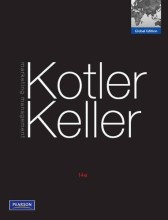Summary: Leereenheid 5 - Energiestomen En Kringlopen
- This + 400k other summaries
- A unique study and practice tool
- Never study anything twice again
- Get the grades you hope for
- 100% sure, 100% understanding
Read the summary and the most important questions on Leereenheid 5 - Energiestomen en kringlopen
-
9 From populations to communities
-
9.5.1 Indirect and direct effects
-
What may be a useful tool in unraveling food webs and what do we expect that the effect of this is?
- The deliberate removal of a species.
- We might expect that this leads to an increase in the abundance of its competitor or, if the species removed is a predator, to an increase in its prey.
- However, can also lead to the decrease in abundance of a competitor or a decrease in a prey population.
- The deliberate removal of a species.
-
When do the unexpected effects of removing a species happen?
When direct effects are less important than effects that occur through indirect pathways. E.g. the removal of a species might increase the density of one competitor, which in turn causes another competitor to decline. -
What is a trophic cascade?
It occurs when a predator reduces the abundance of its prey, and this cascades down to the trophic level below, such that the prey's own resources (mostly plants) increase in abundance. -
Why is the world green according to Hairson et al.? Is this correct?
- Because top-down control predominates: green plant biomass accumulates because predators keep herbivores in check.
- Assuming that the world is indeed green, it does not necessarily follow that the herbivores are failing to capitalize on this because they are limited, top down, by their predators.
- Because top-down control predominates: green plant biomass accumulates because predators keep herbivores in check.
-
11 The flux of energy and matter through ecosystems
-
11.1 Introduction
This is a preview. There are 3 more flashcards available for chapter 11.1
Show more cards here -
What is a standing crop?
The bodies of the living organisms within a unit area constitute the standing crop of biomass. -
What is the primary productivity?
The primary productivity of a community is the rate at which biomass is produced per units area by plants. Expressed in units of energy or dry organic matter. -
What is the gross primary productivity (GPP)?
The total fixation of energy by photosynthesis. A part of this is respired away by the plant itself and is lost as respiratory heat (R). -
What is the net primary productivity (NPP)?
The difference between the GPP and the R. Represents the actual rate of production of new biomass that is available for consumption by heterotrophic organisms (bacteria, fungi and animals). -
What are decomposers and detrivores?
- Decomposers are bacteria and fungi that decompose dead organic matter.
- Detrivores are animals that consume dead organic matter.
-
11.2.1 Geographic patterns in primary productivity
This is a preview. There are 2 more flashcards available for chapter 11.2.1
Show more cards here -
What pattern does the productivity of the different forest biomes show?
A latitudinal trend of increasing productivity from 1019g C per m2 per year most northern to >3000g C per m2 per year in tropical forests.
- Higher grades + faster learning
- Never study anything twice
- 100% sure, 100% understanding
Topics related to Summary: Leereenheid 5 - Energiestomen En Kringlopen
-
The flux of energy and matter through ecosystems - Primary productivity
-
The flux of energy and matter through ecosystems - The fate of primary productivity
-
The flux of energy and matter through ecosystems - The process of decomposition
-
The flux of energy and matter through ecosystems - The flux of matter through ecosystems - Nutrient budgets in terrestrial ecosystems































